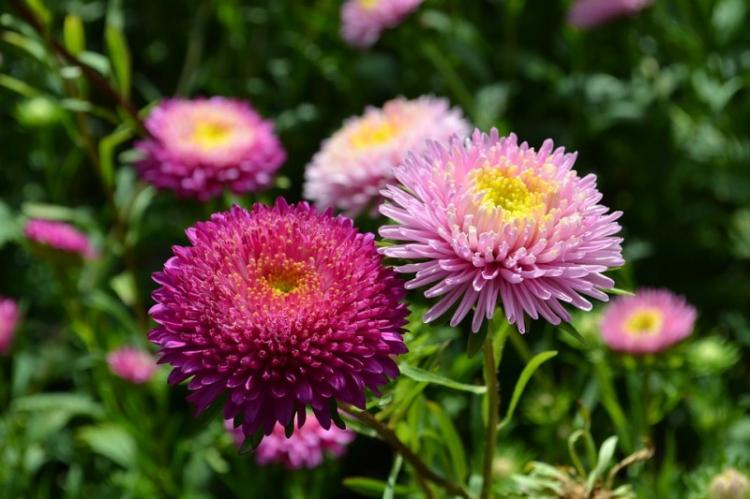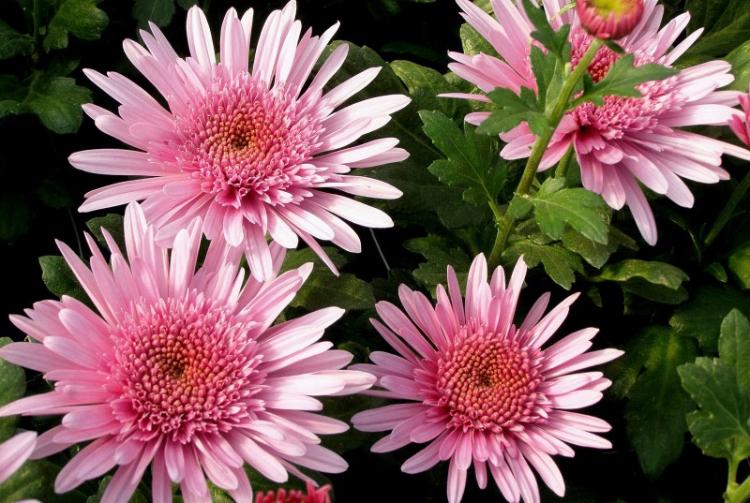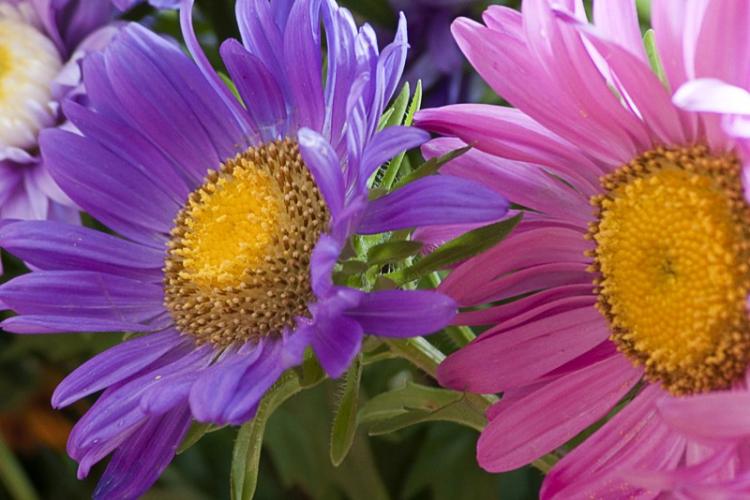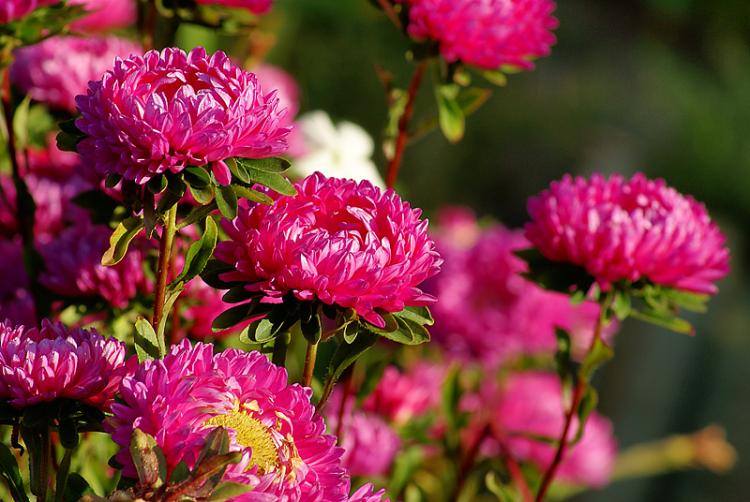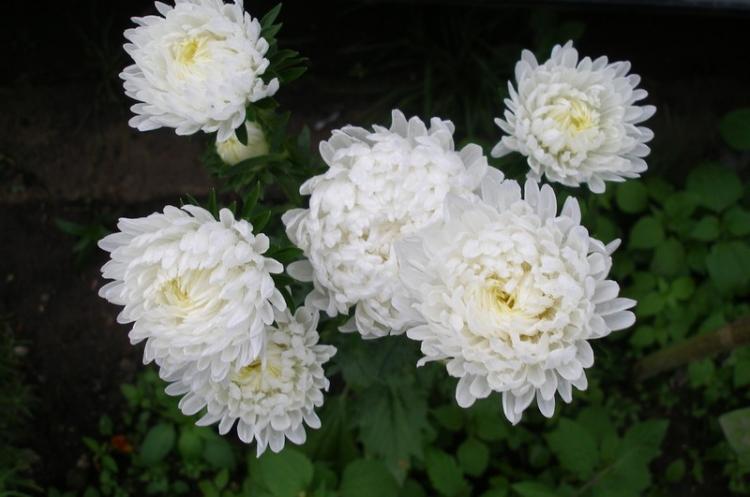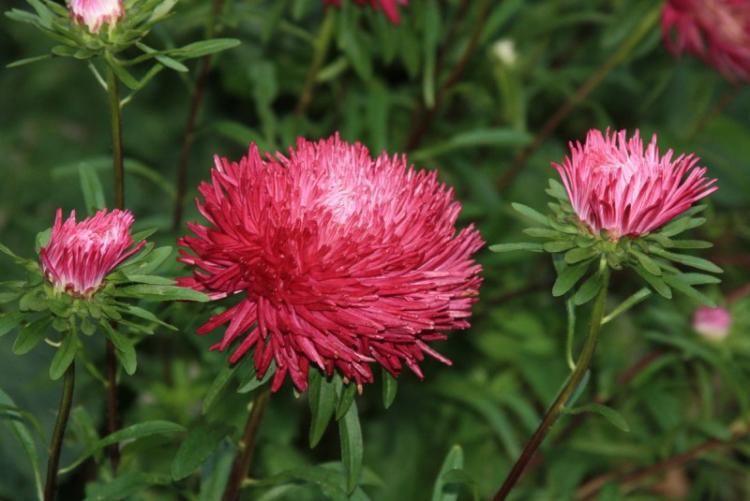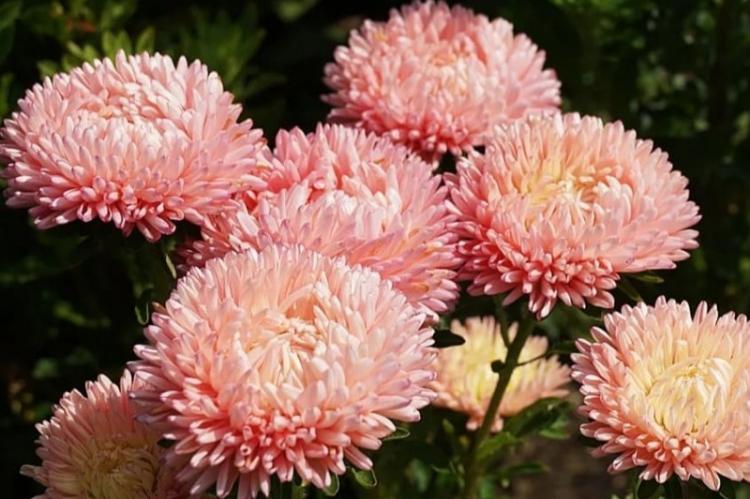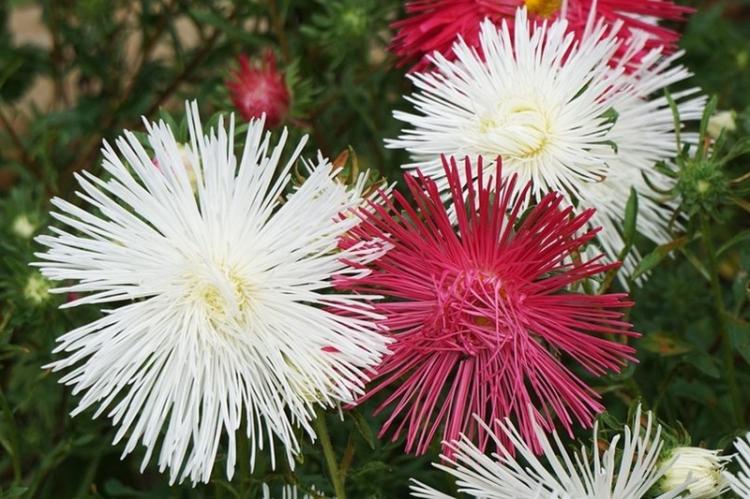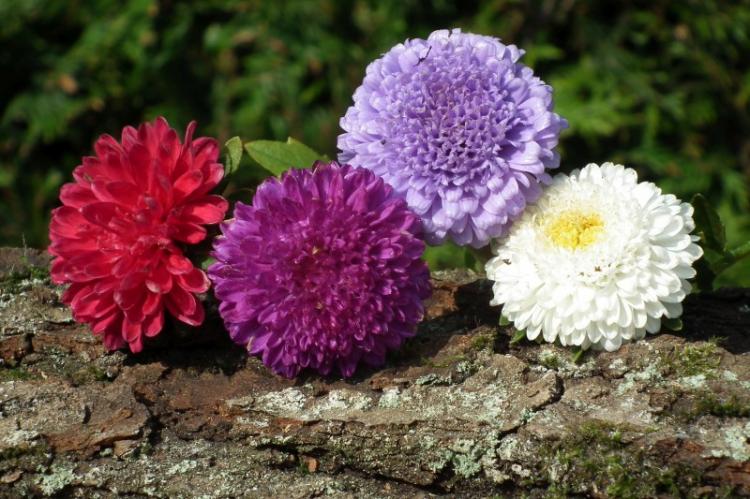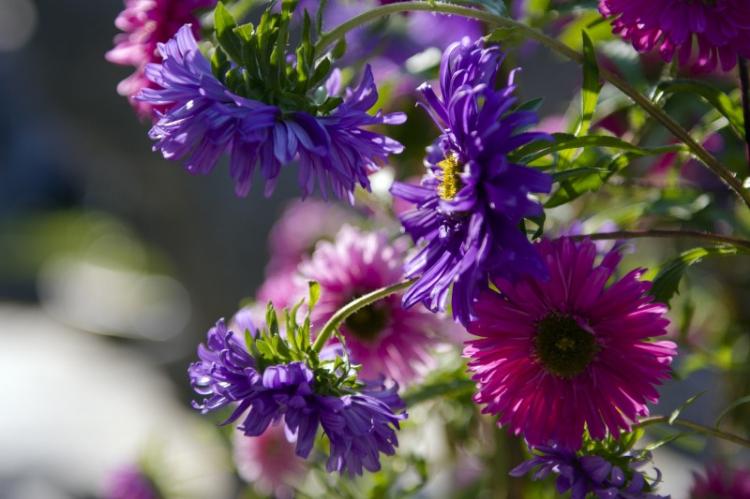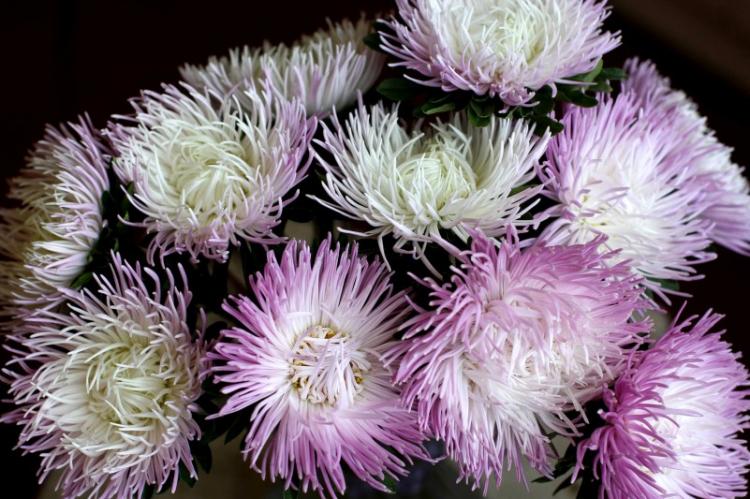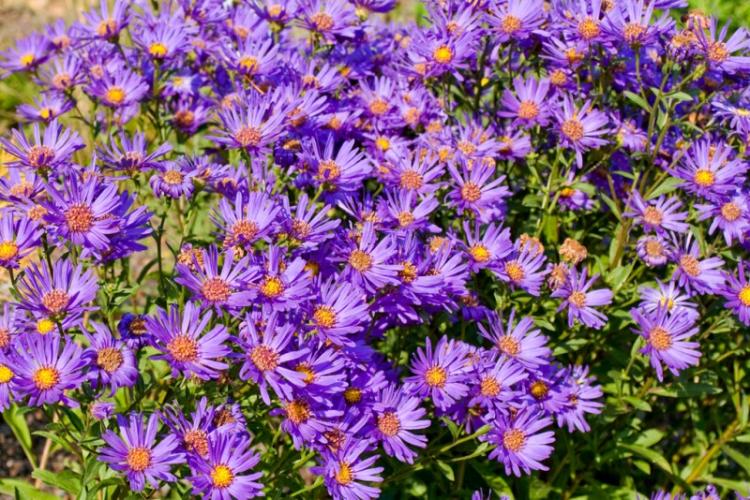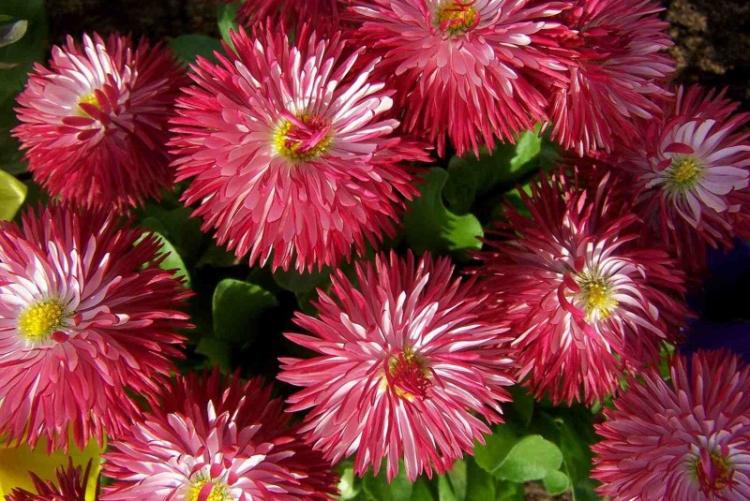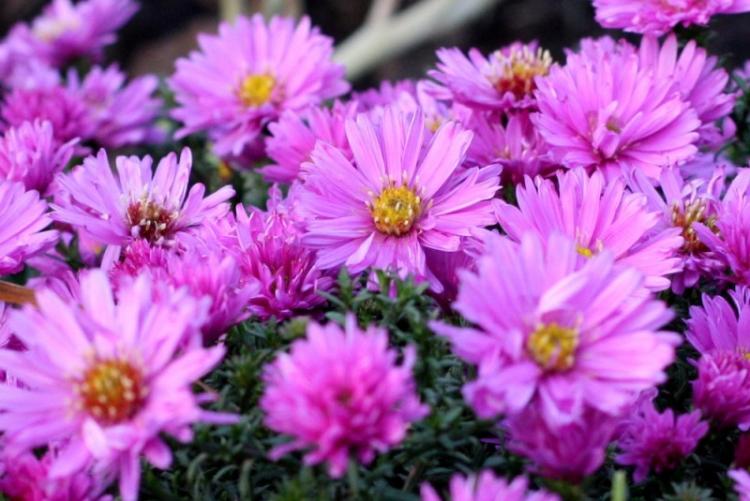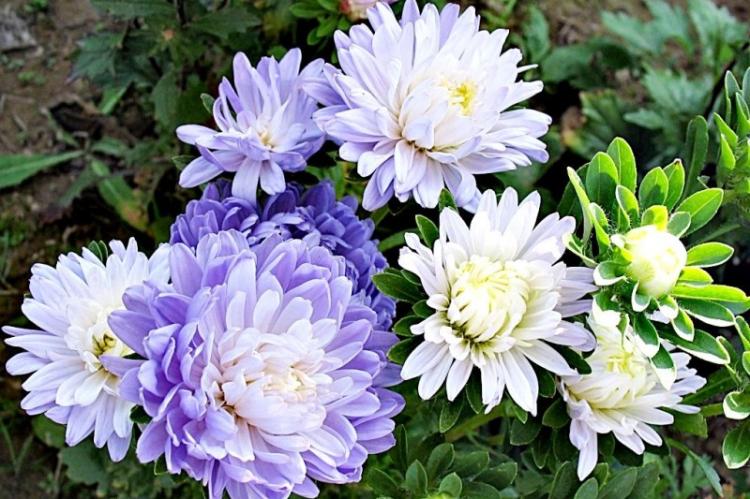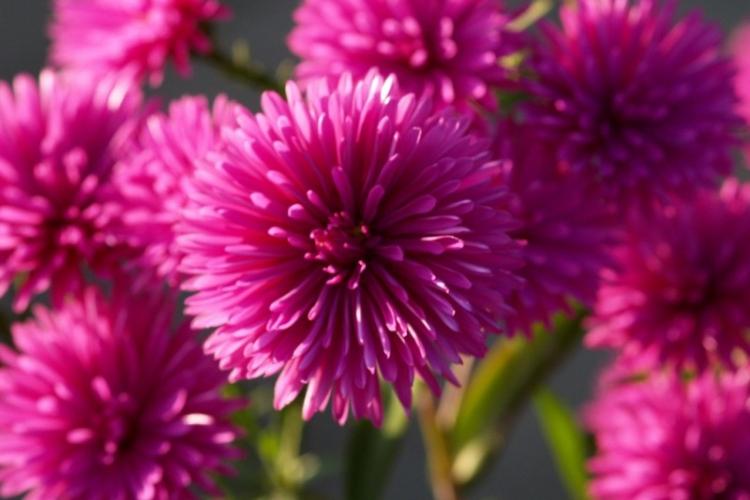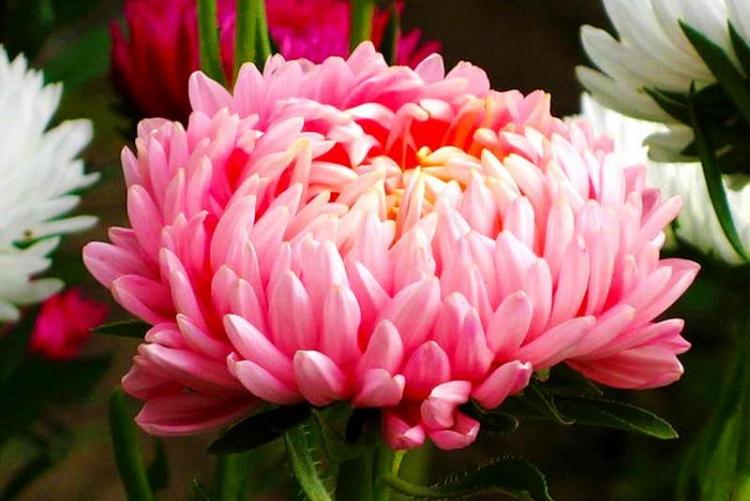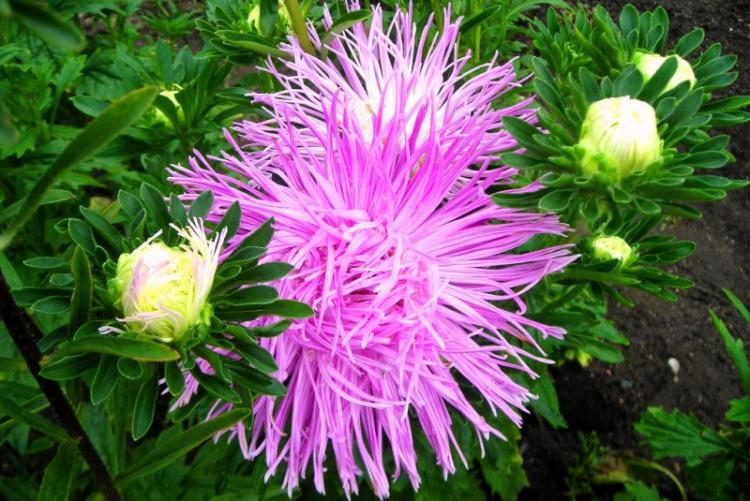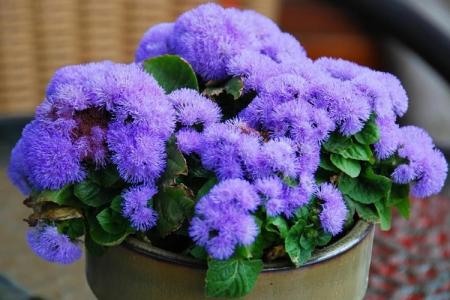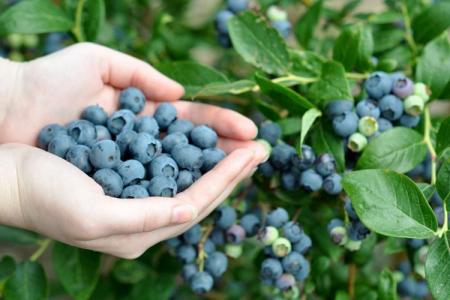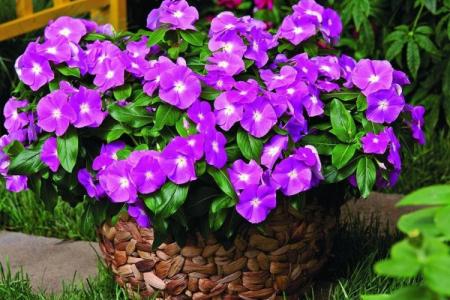
Simple, but such bright and colorful asters are well known to all flower growers. They are used for cutting or for constantly blooming flower beds, which continue to delight even in rainy autumn. Interested, but don't know where to start creating your own seedlings? We are ready to tell you about the main features, the intricacies of care and the variety of types of decorative asters!
general characteristics
The reason for the popularity of asters is not only in their unpretentiousness, but also in their late flowering. In the summer, they almost do not attract attention against the background of lush green seedlings, but in the fall, multi-colored stars will decorate any composition.
Perennial asters are Compositae herbaceous plants that are found all over the world, from Europe to Africa and America. There are more than two hundred varieties with characteristic flower baskets. And this is how the annual garden aster belongs to another family - to callistephuses.
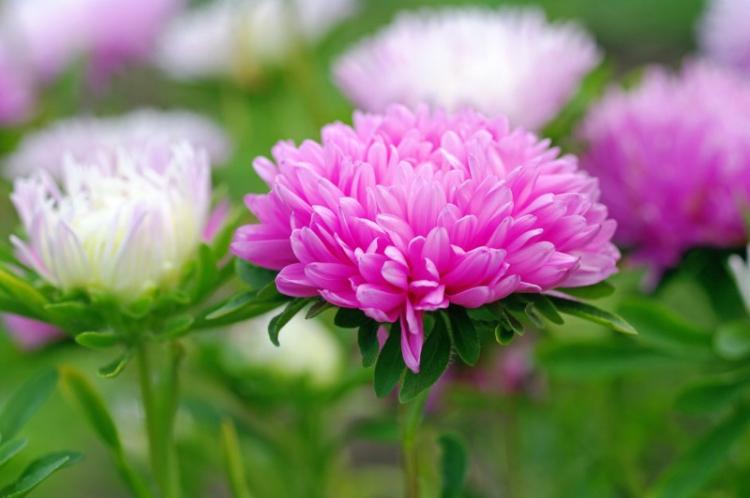
Types of asters
All asters are classified into annuals and perennials, and all of them can be compact potted, long-flowering casing, decorative shear or universal. Annual asters also differ in the shape of their petals: tubular, reed or transitional.
Alpine aster
Perennial alpine aster is one of the most common in gardens and summer cottages. This is a small compact shrub up to 30 cm, which is used to decorate borders, paths and flower bed edges. Flowers up to 5 cm in diameter can be purple, pink, red, white, purple and even blue.

New England aster
A tall autumn variety easily reaches 2 meters in height, so it can become the center of a decorative composition. Lush brushes consist of several dozen relatively small flowers - 3 cm in diameter. They bloom in purple, lilac, pink and white by September.
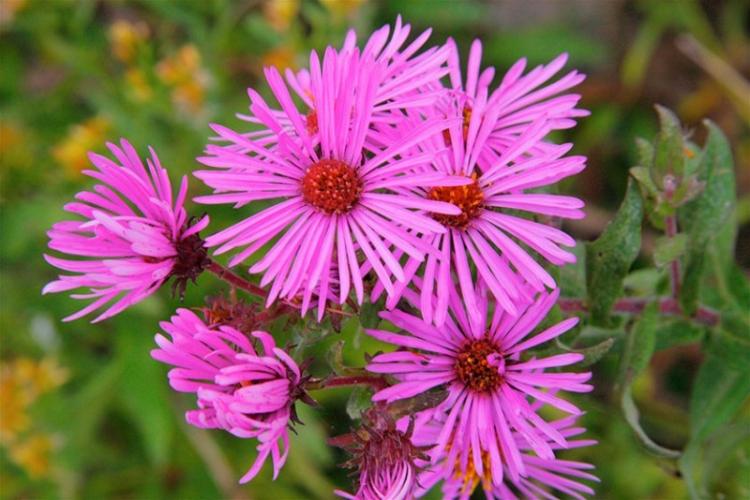
Italian aster
The bright tall aster is also called chamomile and stretches up to 60 cm up. It can be used not only as fences, but also as independent single bushes. The flowers are collected in shields of pink, purple or blue, which bloom by the end of July.
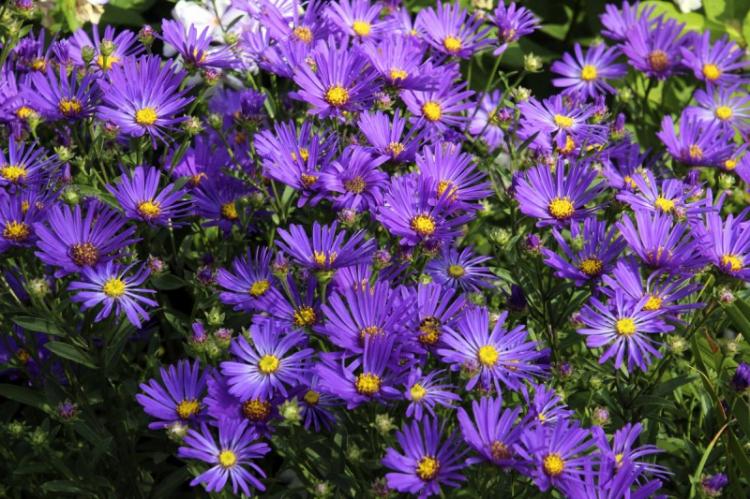
Astra Anders
The perennial spring aster blooms earlier than its congeners and blooms in an exuberant purple color. Low-growing shrubs reach 40-50 cm, and the smallest varieties resemble colored field daisies.
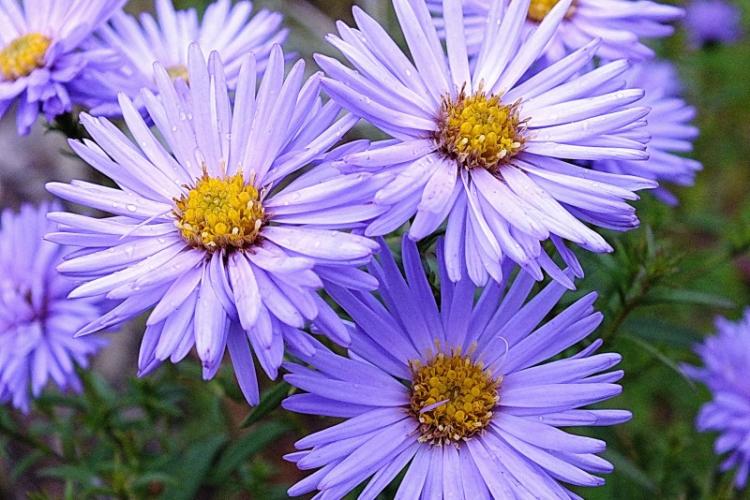
New Belgian aster
Tall autumn aster reaches 1.5 meters, but there are also compact undersized varieties up to 40 cm. Pink or purple flowering panicles bloom in September on lignified stems. They are so thick and lush that you can't even see the foliage behind them.
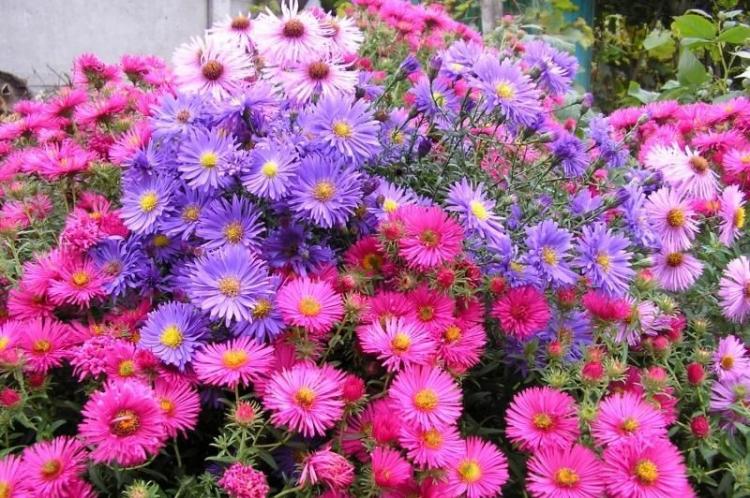
Bessarabian aster
In fact, it is a popular subspecies of the Italian aster and is often singled out as a separate category. Its peculiarity is large flowers with a pronounced brown core.
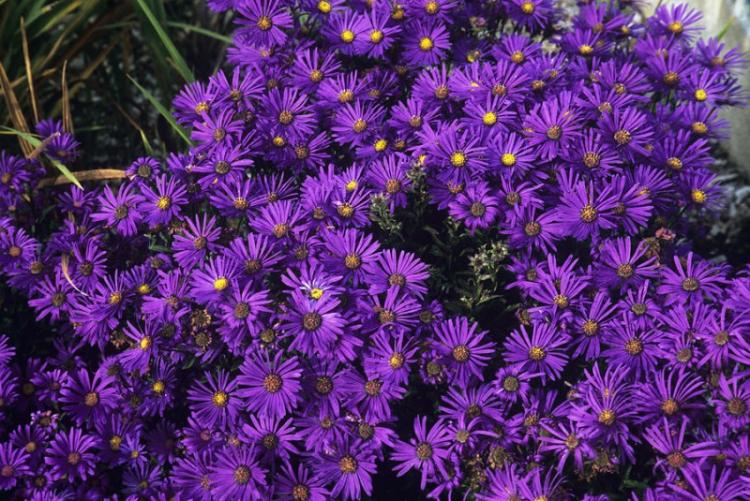
Bush aster
A compact perennial shrub up to 40 cm blooms before the first frost. They are white or light purple flowers that create bright and fluffy hats. She comes from North America, and the dense and luscious foliage looks spectacular even while the bush is not blooming.
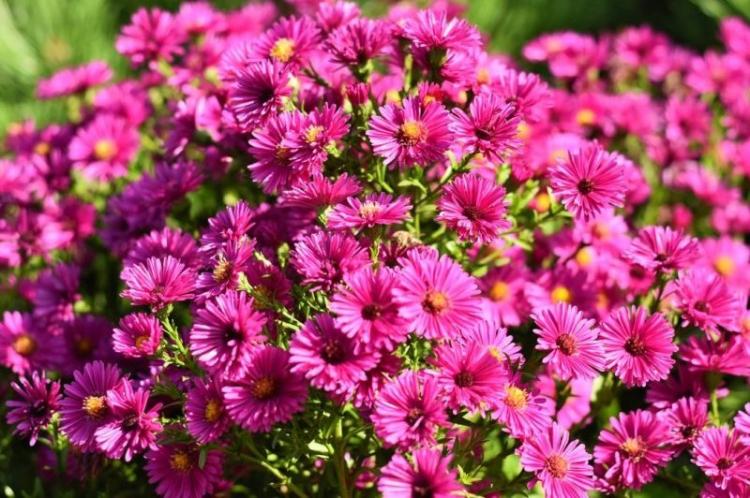
Callistephus
Garden or Chinese aster callistefus is the closest relative of the perennial. It looks like chrysanthemums, dahlias or other flowers, which is why they are often confused. In fact, this is a whole family with a separate classification into early and late, dwarf and giant, double and non-double, coronal, curly, spherical, hemispherical or needle-like.
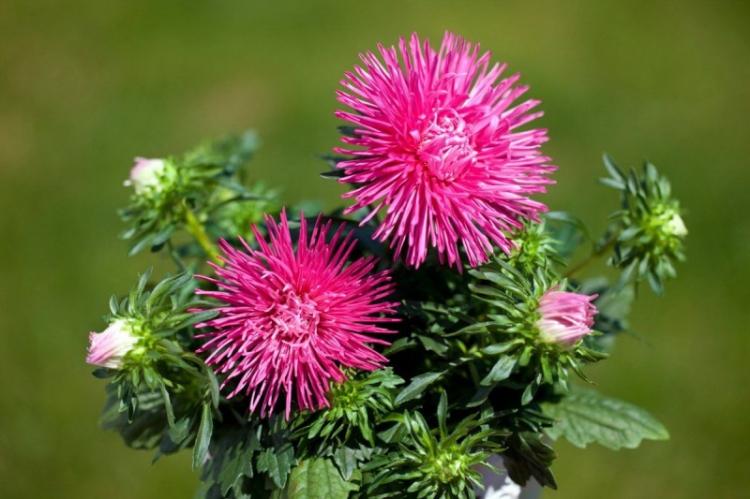
Caring for asters
It is very easy to grow asters, and caring for them is simple and straightforward, so everyone can handle it. The main thing is loosening the soil and regular weeding, and then the flower will feel good and delight with beauty.
Temperature
Asters are thermophilic flowers, but they feel quite comfortable in our latitudes. It is recommended to transplant seedlings when the temperature is already stable above +6 degrees. The optimum temperature for seedlings is 20-22 degrees, but when the seedlings sprout, it must be lowered to 16 degrees.
Perennial asters will have to be dug up and transplanted for the winter, but they can be propagated by division. In the process, it is important not to damage the root system - and then the flower quickly adapts to a new temporary place.

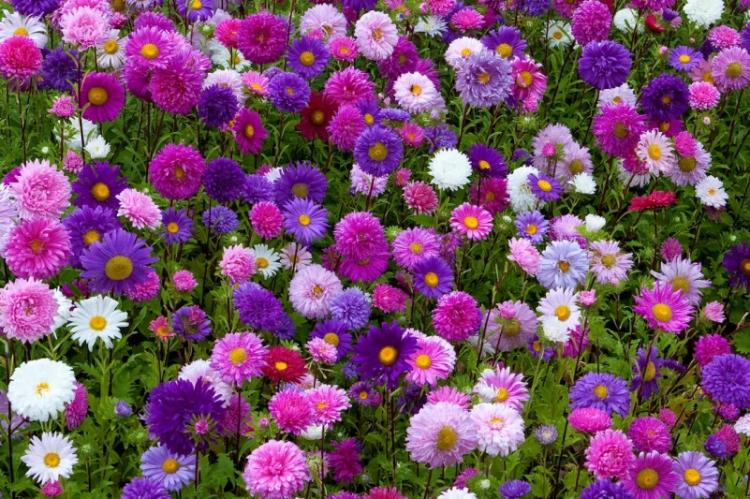
Lighting
Most decorative aster varieties are unpretentious to lighting, so they feel good both in the sun and in the shade. It is this versatility and undemandingness to external conditions that made asters so frequent residents of country gardens.
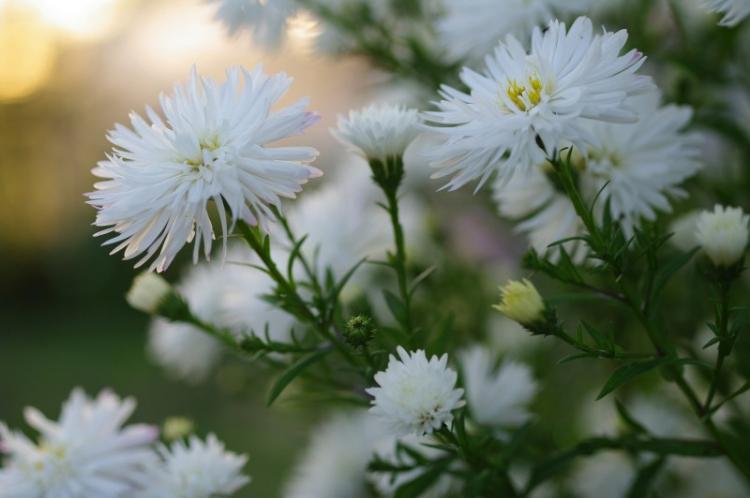
Watering
Asters prefer moderate humidity, so it is important not to overdo it, but also not to overdry the soil. In hot summer, it is better to reduce the frequency of watering, but make it more abundant: up to three buckets of water can go per square.
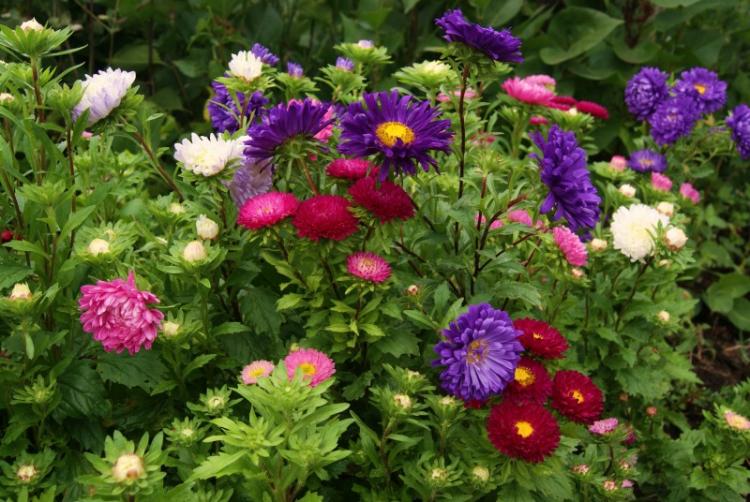
Fertilizers and feeding
Asters need to be fed a few weeks after transplanting into open ground, and after another month, repeat the procedure. For this, specialized complex fertilizers are enough - and the flowers will be lush and beautiful. Additional feeding is needed during bud formation and after the start of flowering, which takes a lot of resources.
The soil for asters must be well mulched with peat, bark or sawdust. Flowers like loose and breathable soil, in which there are fewer weeds and moisture is better absorbed.
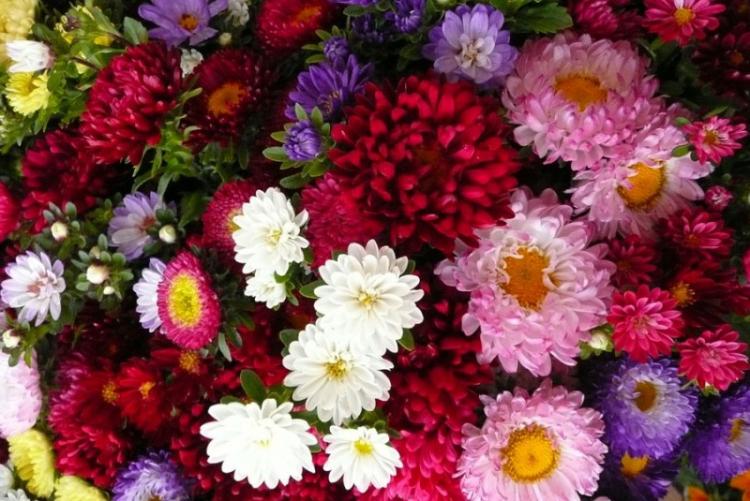
Pruning
Additional care depends on the specific type of asters: tall ones can grow up to 2 meters and require a garter. Thin high pegs are used as a support, or flowers are immediately planted along the fence. And bushy asters periodically need to be cut off to form a beautiful and elastic crown: this way you can even make a full-fledged hedge out of them.
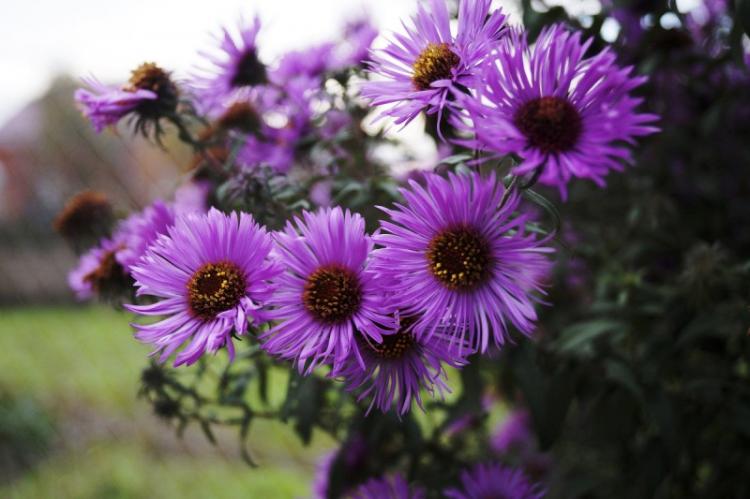
Planting and breeding asters
In order to have time to prepare the ground for planting asters, do it in the fall, otherwise you are unlikely to have large and fluffy flowers sprouting. They need a moistened and fertilized soil, into which humus was introduced in advance.
Annual asters are planted directly from seed - this is the easiest way and they germinate well in both seedling and non-seedling ways. If something went wrong, you can carry out reseeding, having previously studied the quality and composition of the substrate.
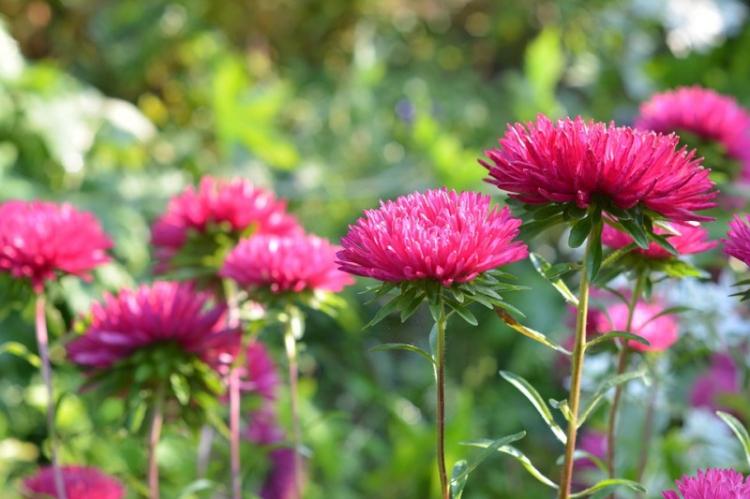
For sowing in the ground, the seeds are scattered along shallow shallow furrows, lightly sprinkled on top and covered with soil. You can thin out future bushes when at least three leaves have already appeared and strengthened on them.
Asters do not have to be pulled out: they can simply be carefully planted at a distance of 5-7 cm.If you grow seedlings in a greenhouse, transfer them to the beds only after the development of the root system and when the height of the bushes is at least 10 cm.
Perennial asters sometimes require a transplant, which is carried out in winter. And it is easier and faster to propagate them by cuttings with the help of young shoots that appear on the stems in the warm season. They take root quickly and grow into fluffy and sturdy shrubs that thrive in gardens and rose gardens.
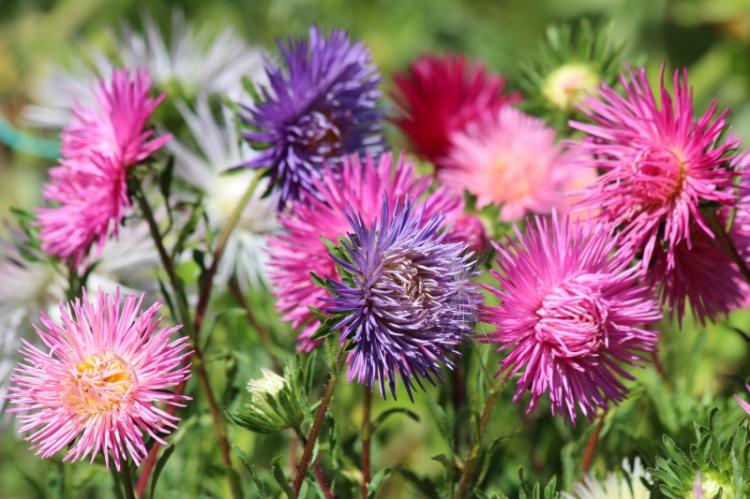
Pest and disease control
Asters are unassuming to care for, but susceptible to some characteristic diseases. For example, they cannot be planted in areas where nightshades or some other flowering crops have grown for at least 5-6 years.
The most common of them is fusarium, provoked by mushrooms of the same genus. It is almost impossible to cope with the problem, because the flowers turn yellow and wither too quickly. But it can be prevented if the soil and seedlings are treated in time.
The second common fungal infection is black skin caused by decay of the root collar. It develops in acidic soil: the seedling turns black and withers. To combat the problem, remove all affected plants as soon as possible and treat the soil with potassium permanganate or special agents.
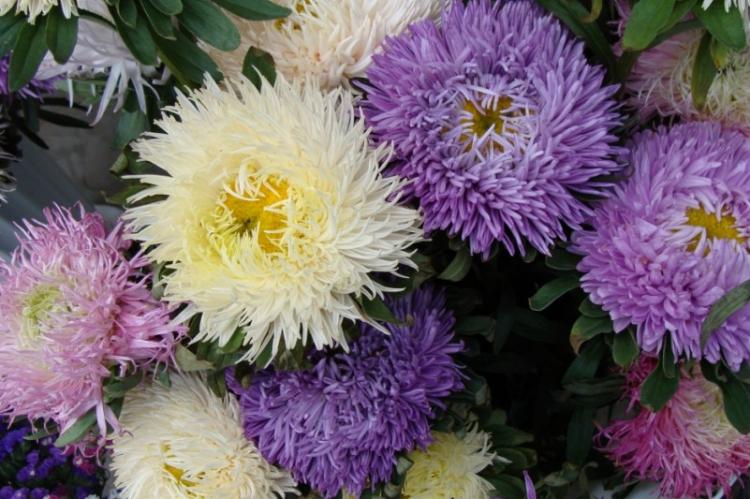
If the leaves turn lighter and yellow, this is the so-called jaundice, which is spread by cicadas and aphids. It inhibits the growth and development of the plant, prevents flowering. It is important to treat the seedlings with insecticides on time and completely remove damaged flowers.
Asters do not tolerate coniferous plants well - because of this, rust can appear on the leaves. Powdery mildew occurs less often, but special series have long existed to combat it.
The main pests of asters are earwigs, spider mites, slugs, aphids, pennies and meadow bugs. For prevention, do not forget about thorough digging, removing annual plants, fertilizing the soil and observing the distance between seedlings.

Asters - photo
Asters, for all their simplicity, amaze the imagination with a variety of shapes and colors. If you are still in doubt, we have compiled this selection of photos with the most beautiful and graceful "star" flowers.
